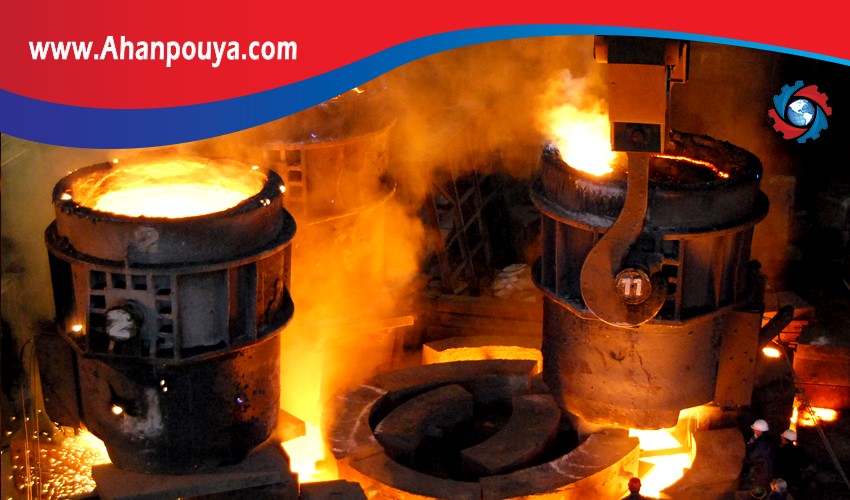
The iron and steel industry plays a very constructive role in the economic prosperity of countries due to the supply of industrial raw materials.
Processing of iron ore as a raw material for production of pellet
Production of DRI
Production of
Turn a slab into a hot coil with a hot rolling process
Produce hot coils using the cold rolling process
steel complementary operation and production of the final product the coil and the cold sheet
coated and production operations of coated sheet steel such as (galvanized sheet, colored sheet, tin coated sheet)
the iron ore is crushed, in the first stage, which is the processing of raw materials, and after a certain process, its impurities are separated. Then, in the process of pelletizing, iron ore is pelletized and after Heating operation, a product called pellet is produced. Pellets produces pure iron, in direct revival with carbon. During this process, the pellets lose their oxygen and direct reduced iron is obtained. direct reduced iron is stored in steel tanks as a raw material for steel production.
In the second stage, iron is converted into molten steel. At this stage, scrap iron and direct reduced iron (with certain ratios) in electric arc furnaces are converted to molten steel.
In the third step, the molten steel is discharged into large pots and sent for complementary operations. Finally, according to the laboratory samples, molten purification is performed then the molten steel is ready for casting. If the casting operation is not performed for any reason, the melted temperature is maintained in the furnaces, and this delay is very costly. At this stage, the melt produced during the casting process becomes ingots or slabs. To speed up the casting operation, the casting machines have two paths that require the molten material to enter the machine molds from two separate paths. Molten material, after discharging in the mold, cooled by the flow of water around the mold and takes the form of a mold, and slowly cools down, and finally comes out of the casting machine as a long strip with a rectangular cross section.
At the end of the casting line, these strips are cut to certain lengths temporarily and finally a steel ingot is produced.
In the fourth stage, slab enters the hot rolling process as a semi-finished product. In the hot rolling unit, the slab is heated to 1200 degrees by preheating furnaces. The slab is formed at this temperature, then passing through the rolling rollers, its thickness is reduced and after cooling it is delivered as a hot coil. The product of the hot rolling unit can be sold as a final product and also, can be used as a semi-finished product to continue the next processes. In the rolling completion unit, according to the customer's needs, if necessary, the skin pass is performed on the coils. Also, during the cutting stage, the coil is cut and presented as a steel sheet as the final product.
In the fifth step, in the cold rolling section, the hot coils are passed of the acid washing process and the surface of the coil is cleaned. This product, called acid washing coil, can be sold as a final product or sent to other units to continue working. In the cold rolling stage, the acid-washed coil is passed through a number of rollers in cold mode and the thickness of the steel sheet is reduced due to the pressure of the roller and the traction of the sheet. The product of this process is raw coil. At this stage, the product can be sold as a final product or used as a cover during other processes.
In the production of cold products, raw coils go through the steps of annealing, skin rolling and steel sheet modification. According to the customer's order, the coil produced after passing the mentioned steps and cutting is used in the production of car body, home appliances and filtering, etc.
The final step is the sheet covering operation. This coated steel sheet includes galvanized sheet, tin-plated sheet and colored sheet. Covered products are resistant to rust and are of good quality. In the tin plating process, the surface of the coil is covered with a thin layer of tin. tin-plated sheets are used in the food industry and in the production of tin cans for chemicals and solutions. In the galvanizing process, the surface of the sheet is covered with a thin layer of zinc. The final product is used to build tanks and so on. Galvanized sheet can be used as a semi-finished in the coating process. In this process, the surface of the steel sheet is covered with special paints. This product (colored sheet) is used in the home appliance and shed industry.

Ahan Pouya with more than a decade of best-selling experience, adheres to professional and ethical principles in the field of selling and buying at inside and outside the borders of Iran, helping you in the steel industry.